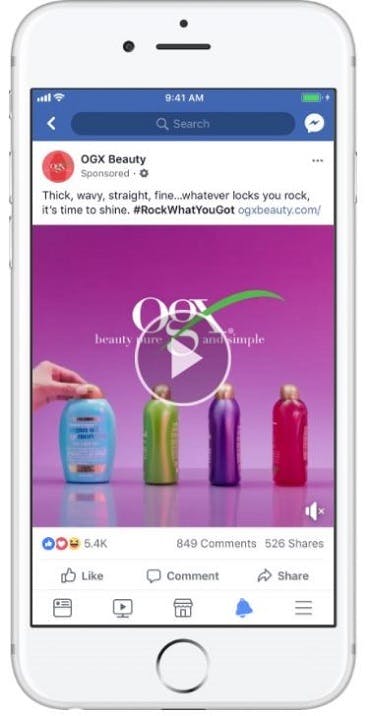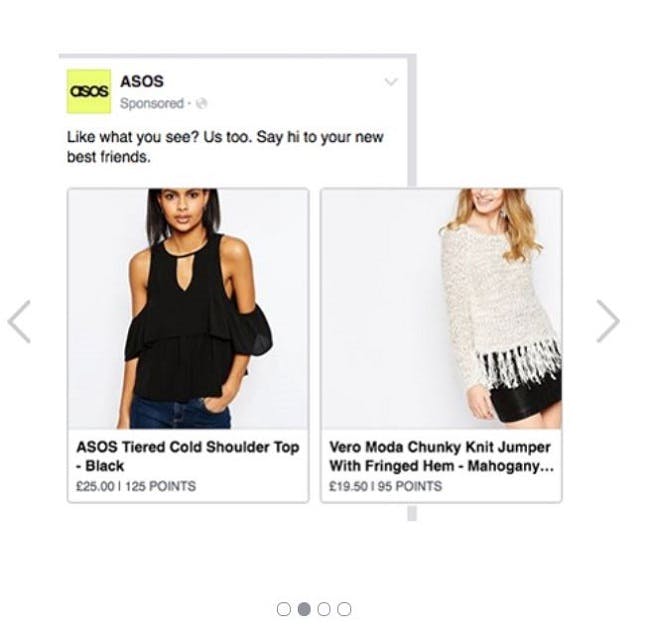So, how can marketers ensure their campaigns are in tip-top condition? Here’s a few tips on optimising your Facebook ad strategy for the year ahead.
(Hint: Subscribers can download our Paid Social Best Practice Guide)
Target people in consideration phase
One of the main benefits of Facebook advertising is being able to target users based on a wide range of variables, ranging from age and location to relationship status and occupation. Advertisers can take this one step further to target users based on super-precise interests, such as music categories, specific bands, cultural icons, or magazines, to name a few random examples.
This is likely to yield the best results, as ads will be less expensive but far more powerful. Users will be more inclined to take action if they are hyper-engaged in a certain topic or category.
Another aspect of targeting to think about is by product consideration. In other words, how close users are to buying a product, typically spoken about in terms of whether they are ‘cold’, ‘warm’ or ‘hot’.
Depesh Mandalia, who is the Founder and CEO of SM Commerce, uses this technique, suggesting that this is “a key strength within the Facebook ads platform” as it “follows basic marketing concepts of lead nurturing and – combined with mediums such as email and paid search – allows a business to ensure they’re hand-holding customers through the consideration phase into becoming a customer.”
Essentially, it ensures that ads are not just reaching people who might be interested in a product, but those have displayed tangible interest. In turn, they have more chances of conversion than those who are seeing an ad for a brand or item that’s entirely new to them.
Find your relevancy
With over eight billion videos (or 100 hours) watched on Facebook on a daily basis, video is becoming the most obvious choice of creative. There’s good reason – video content is proven to be highly effective for grabbing the user’s attention. Nielsen suggests that 74% of total ad recall can be achieved already within the first 10 seconds of a video ad.
However, marketers shouldn’t automatically assume that it is the correct medium to choose. Video ads are typically more expensive, which could be a big barrier. Similarly, other creatives could be better aligned with the brand or product. For example, a carousel ad could be more effective for an ecommerce site that wants to showcase different features or aspects of a particular product.
Mandalia suggests that the visual for your ad doesn’t necessarily need to represent your product or brand directly, but more importantly, it needs to feel natural in the user’s newsfeed and relevant to what you’re promoting.
With ad prices going up in the past few years, it’s also important to deliver strong creatives in order to minimise costs. In other words, it’s worth spending more on a campaign that is likely to generate greater engagement than a less expensive and less impactful one overall.

Don’t dismiss manual bids
While the majority of advertisers might rely on Facebook to decide on the optimal cost-per-action, manual bidding could be a better option in terms of scale.
Though Facebook updated the bidding system last year so that advertisers could theoretically get the most return on their investment, manual bidding allows you to take greater control in order to get the right balance between growth and cost efficiency.
A study by AdEspresso reflects this notion, with results showing that a high manual bid helped to accelerate ad delivery and get more conversions at a cheaper price than automatic.
Focus on sales, not clicks
Another easy mistake to make is placing too much focus on the wrong kind of metrics, also known as ‘vanity’ metrics. This means factors like reach, video views, or clicks. While these numbers might be a good indication that you’re doing something right – they don’t measure success in terms of actual sales.
As a result, these metrics lead to greater loss in the long-run, as you might be tempted to repeat or re-run ads that aren’t generating anything more than ‘empty’ engagement.
There is the argument that any kind of engagement is positive, perhaps contributing to increased brand awareness. However, if you place undue focus on this, it could mean you are making the wrong decisions about overall strategy.

Test and compete
Regardless of how much confidence you have in an ad strategy, the only real way to discover which ads yield the best results is through testing and optimisation.
Split testing (or A/B testing) involves running a series of ads that are the same apart from a single variable, such as copy, image, or even custom audience. Facebook has an in-built system which tells you which ads are more likely to perform.
Once you have determined this, it is also helpful to run a competitor analysis. This process involves finding out what your competitors are currently doing, but more importantly, how their audience is responding. This could be done by analysing content strategy, social sentiment, or simply reading reviews or comments online. In doing so, you will be able to gain a much better understanding of your target market’s preferences and ideals, and use it to inform your advertising.
Further reading:

Comments